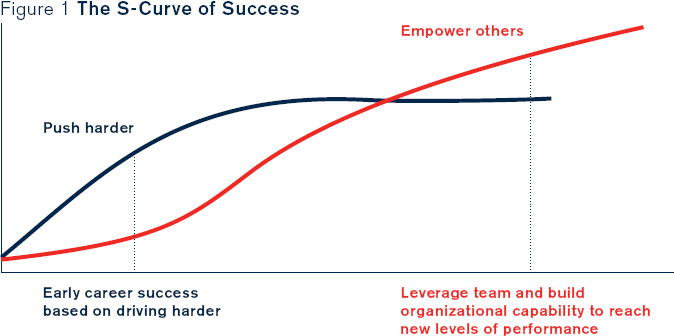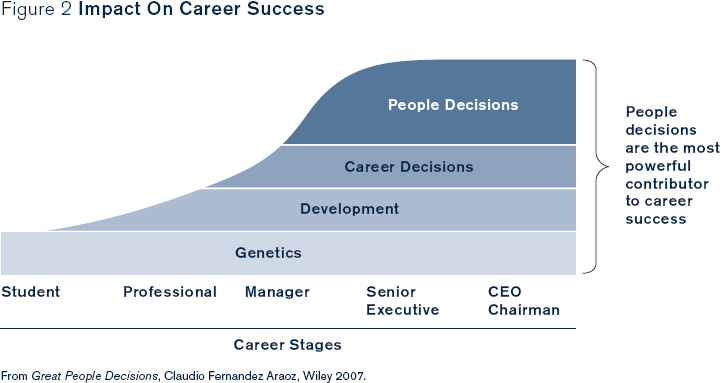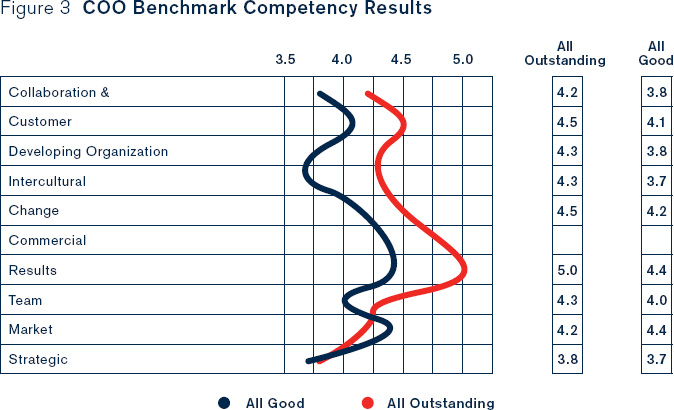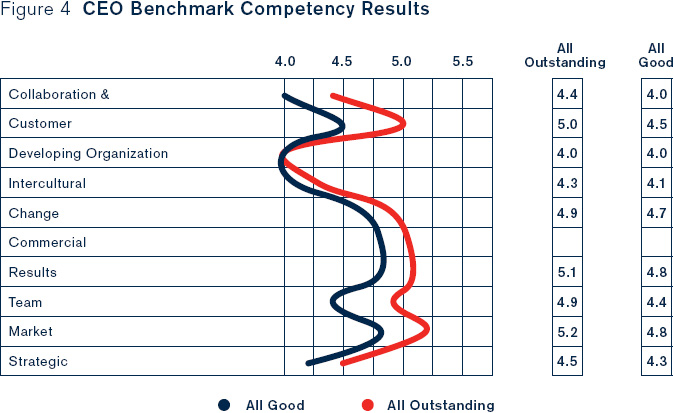“The five things I wish I had known when I was promoted to the C-Suite”
“I wish I had known then what I know now.” That’s the frequent refrain we hear in candid conversations with a surprising number of C-level executives. They say that when they first arrived in the C-suite they were surprised to learn that what had made them successful in the past often didn’t work anymore. They felt unprepared, even though they had been working toward a top leadership role for most of their careers. The great ones caught on fast, but even they say they wish they had learned some essential lessons earlier. Here are five that they say are among the most important:
No.1 Working harder doesn’t cut it anymore.
Throughout their careers, and especially early on, executives are rewarded for working harder. The harder they worked, the more they accomplished and the faster they were promoted. This familiar cause-and-effect relation, however, begins to yield diminishing returns the higher an executive rises (Figure 1).

Sooner or later, successful executives say, you have to learn that at the highest levels of the organization merely working harder no longer dramatically improves performance. Working smarter is the key — and the key to working smarter is to harness the power of your people more effectively. That’s the S-curve of success, depicted in the trajectory of the “Empower Others” line in Figure 1. Successful C-level executives know that they must find a way to empower others to realize higher levels of performance.
Empowering others means delegating responsibilities to the team, developing talent, and communicating the case for change. Empowered teams free leaders to devote their best energies to the things that are really important: focusing on customers, recognizing trends in the market, and delivering results. Given the weight and scope of responsibilities of a C-level executive it’s all too easy to be consumed by the details and to miss the S-curve. At this level, it’s about leveraging the team and building the capability of the organization.
Surrounding yourself with a great team doesn’t happen by chance. It requires conscious choices in the selection and development of team members. We have found that an effective way to select a team is based on competencies — understanding behaviors based on past experiences.
The ability to make the right people decisions is critical not only for improved organizational performance but also for your career. As our colleague Claudio Fernandez Araoz writes in Great People Decisions: Why They Matter So Much, Why They Are So Hard, and How You Can Master Them (Wiley, 2007): “After 20 years of practice, research, and reflection, I am firmly convinced that the ability to make great people decisions is the most powerful contributor to career success” (Figure 2). Early in a career, natural ability and other inherited characteristics — the “Genetics” of the figure — play an important role in success. However by the time someone takes on managerial responsibilities or becomes a senior executive, people decisions have a profound impact on success.

No. 2 Improve your leadership competencies.
C-level executives typically have specialist or functional underpinnings and have moved into more generalist roles. But once there, executives should not think that development stops. Almost all leaders have room for improvement. A leader’s ability to objectively understand strengths and weaknesses and address performance gaps will in large part determine if an executive will move from good to great. That means improving on leadership competencies.
Based on experience working with senior management teams across industries and on more than 25,000 management appraisals conducted during the past five years, Egon Zehnder has developed a comprehensive model of leadership that encompasses the core competencies of top leaders, no matter their function or role. These universal leadership competencies include: collaboration and influencing, customer focus, developing organizational capability, intercultural sensitivity, change leadership, commercial orientation, results orientation, team leadership, market knowledge, and strategic orientation. Together, these ten competencies make up the portfolio of abilities that top leaders must have. In assessing executives we use a clearly defined scale, based on specific behaviors, for scoring each competency.
Figure 3 depicts a comparison of the scores on these competencies for Outstanding COOs versus Good COOs. Figure 4 depicts a similar comparison for outstanding CEOs versus Good CEOs. Even what appear to be small differences in scores are in fact significant because in our experience improving a single competency by a single point (say from a 4 to a 5) in our scale requires at least a year, and it’s difficult to focus on more than one competency at a time.


One of the most significant disparities between Good COOs and Outstanding COOs lies in their skill at developing organizational capability — an indispensable competency for getting on the S-curve of empowering people. The levels of this competency can differ significantly:
Low levels Leaders encourage improvement and development
Moderate levels Leaders give constructive feedback and identify development priorities
High levels Leaders are focused on providing opportunities to build the human capital of the organization
COOs demonstrating this competency at the highest level have a drive to develop the capabilities of others and they find deep satisfaction in knowing they have made an impact on an individual’s life or career. They exhibit a wide range of constructive behaviors, including:
- Articulating and setting specific individual development goals to build current and future capability of the organization
- Providing specific assignments or projects with specific developmental targets
- Building a talent pipeline from inside and outside the company to build an organization of top performers
- Advocating the strategic career management of individuals to build the leadership capital of the entire organization
Interestingly, as COOs develop the capability of the organization through a systematic and structured program of talent management and through building the capability of leaders throughout the organization, they are able to achieve greater results as compared to their peers. As COOs move to CEO roles, the differentiator between Good and Outstanding is no longer the ability to develop organizational capability; rather it is team leadership and customer focus.
With an understanding of these leadership competencies, self-aware executives can immediately begin to focus on gaps, and by addressing these gaps they can move from good to great. Outstanding C-level executives can also continue to improve and eventually join the ranks of the truly transformational leader.
No. 3 Building coalitions is essential.
Most C-level executives are aware that the “command-and-control” mentality that dominated the strictly hierarchical organizations that flourished in the U. S. after World War II long ago ceased to be effective. On the other hand, they know that a kind of simple egalitarianism is neither practical nor possible — business moves too fast and accountability for results must be clear. The challenge is to find the balance between those two extremes in order to get things done, especially when it comes to aligning the organization around critical initiatives that require significant change.
Walking that fine line requires the ability to collaborate with other key leaders, influence them, and build enduring partnerships across business units and geographies. Seasoned executives don’t need to be told what to do anyway — they need to be persuaded and coached. Successful leaders therefore establish a collaborative culture through openness, shared action and emphasis on multiple long-term benefits even at short-term costs for the leader. They bring people together across boundaries to achieve results, and they actively engage colleagues to make joint decisions. That doesn’t mean majority rules. Rather, it means building group momentum for the case for change by building behind-the-scenes support and addressing emotional reactions in order to maintain commitment to a course of action that the leader believes to be best for the organization.
No. 4 Get feedback early on.
Often a few changes in style or focus, based on candid feedback, can help executives new to the C-suite get on the right track early and build momentum for success. One new COO who had been recently internally appointed to the role was viewed as the successor to the CEO, but he soon found that he wasn’t invited to all the “important” meetings. Later, he found that what he thought was the mandate for his role was clearly inaccurate. He lost support and was ultimately removed from the company. He said that he wished that he had taken time to obtain feedback early on, but at the time he didn’t think he needed to.
There are a number of ways to gather such feedback: through a direct discussion with stakeholders, or with the help of the HR department or a firm like Egon Zehnder that is experienced at leadership appraisal. But whether a leader solicits the feedback individually or with assistance, it should at a minimum cover these basic issues:
Building relationships How well am I building relationships in the organization? Do I have the trust of the team? Of the board? Am I networking effectively and sufficiently with key internal and external stakeholders?
Gaining Support How well are my goals and actions aligned with the perceived mandate for the role? Am I effective at dealing with the cultural/political complexities of the new role? Do I have the support of internal sponsors? What quick wins have I achieved?
By getting answers to these basic questions sooner rather than later, a leader can make changes, often seemingly small ones, which make a big difference later on. One executive who was recently placed into a global leadership role to transform a company said, “This feedback saved my job because I didn’t realize that my direct style was counter to the leadership team’s culture. Before I joined the company, the CEOinterviewing me had talked about how the culture of the company was always direct and straightforward, but I didn’t realize that a different style was expected within the leadership team.”
No. 5 Enjoy the experience.
The role in the C-suite is often the ultimate career prize. Unfortunately, many top executives find that the pressures of the job leave little time for enjoying it. We often hear in private conversations, “I look back now at the experience and I was just too busy and had too little time. I should have recognized that I could have made changes in the organization that would have allowed me to reorganize my priorities.”
Remember, too, that tenures of executives have gotten shorter in recent years. The causes are various: mergers and acquisitions, board changes, pressures for short-term stock performance, and other pressures. Given the shorter job expectancy, leaders should get as much enjoyment out of the experience as possible.
That may sound like a bumper sticker, but there is in fact a practical way to lighten the burdens of the job and to find deep satisfaction as a leader. It goes back to the S-curve of the first lesson: empowering others. As one executive said, “If you have the right people in place, you can minimize the firefighting and enjoy the ride.” Helping people develop, grow, and move the organization forward not only helps produce superior business results but should be a source of great gratification derived from their achievement — and that of the leader. And superior results usually lead to lengthier job tenure and the opportunity to experience even more satisfaction at the pinnacle of a career.





